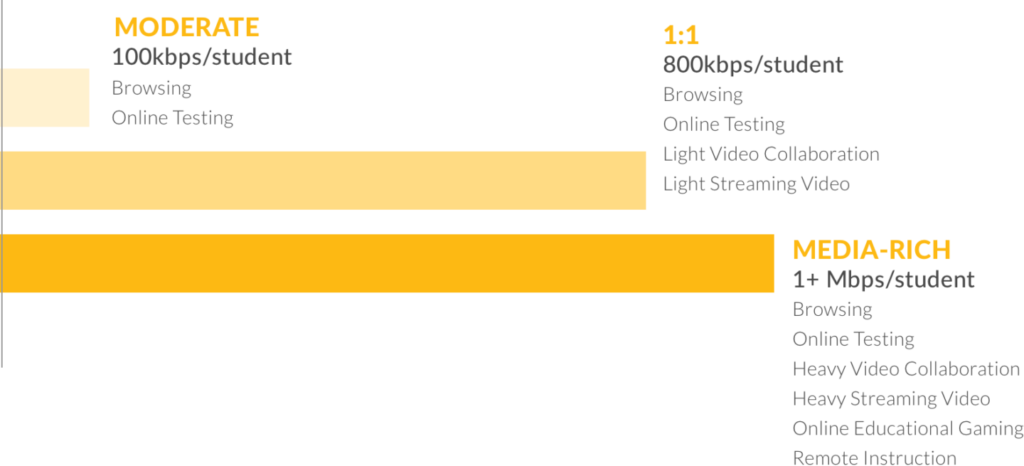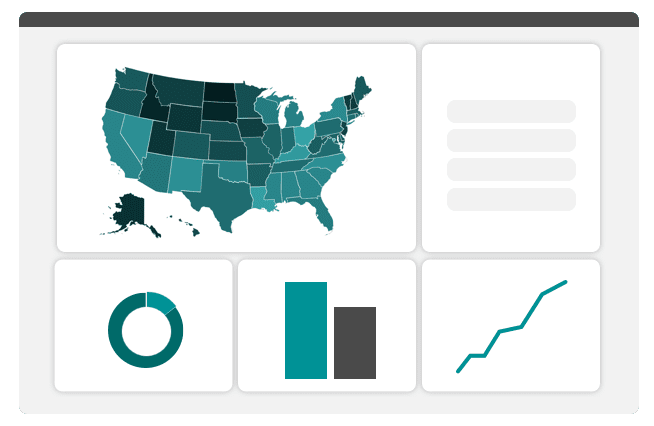Why High-Speed Connection Matters
In today’s classrooms, basic Internet access is not enough. Over 94% of schools use digital learning in over half of their classrooms, requiring students to have reliable, fast connections in order to prepare sufficiently for future challenges like college and the job market.
High-speed Internet access is necessary to lay the foundation for teaching and learning, which is why continued planning for improved connectivity remains important.
If you are thinking about how to improve your district’s connectivity but are unsure about where to begin, here are three questions to help start (or, re-start) the conversation.
1. What Deals Have Internet Providers Offered Other School Districts in Your Area?
Whether you’re inquiring for your own reference or to convince colleagues of the importance of a network upgrade, having an understanding of what your broadband costs could be important. It may be that the pricing you have is on par with similarly sized districts in your area.
If it is higher, however, it may be time to search for a new provider or negotiate with your current one. A rural school district in Texas found that they were paying more than four times what nearby school districts were paying for Internet access. Once they had this data in hand, they were able to work with their service provider to get more bandwidth while maintaining a similar monthly cost.
Increased transparency is critical to getting cost-effective Internet. You can find that comparative district pricing on our free price transparency tool, Compare & Connect K-12.
2. Which Digital Learning Tools Do Teachers in Your District Wish They Could Use?
Often, teachers have a vision for the types of technology tools and applications they’d like to offer students but do not have the resources to procure such tools.
Opening the conversation by asking teachers what would best equip their classrooms for digital learning is a great place to start. Are teachers interested in integrating videos and personalized learning, or use the Internet for website browsing and research?

It can be helpful to know not only what teachers are using now, but their vision for the future. These conversations can help school leaders make decisions about how much broadband is needed, the type of infrastructure that is required, and how to make sure that infrastructure is scalable.
3. What Are the Barriers to Higher, More Reliable Internet Speeds for Your School District?
Gaps in school connectivity may exist for any number of reasons. In rural districts, building out the necessary infrastructure might be a daunting or unaffordable prospect.
Identifying exactly what it is that has kept your district from getting the connectivity it needs can help you arrive at possible solutions. For example, some districts have benefitted from new infrastructure build projects in their communities. Other districts concerned about bandwidth costs have received large subsidies from the E-rate program (and its state match programs), making high-speed Internet access an affordable–and sometimes free–opportunity.
Better connectivity is not just important; it is attainable. By starting, or re-starting, this conversation, you are making sure that your district can support technology digital learning and teaching for years to come.
Learn how school districts in your state are procuring the Internet access needed to facilitate digital learning in every classroom, every day.
This blog post was written in partnership with the Rural Schools Collaborative and EducationSuperHighway. Learn more about our work together.






